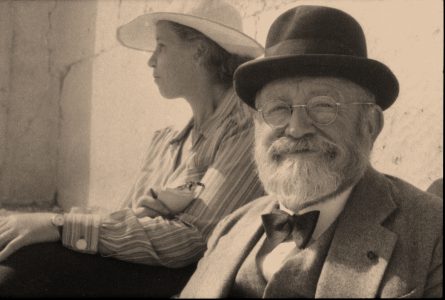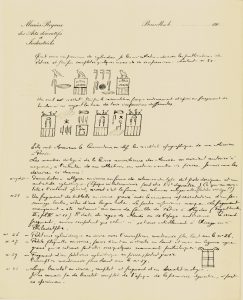Jean Capart and Marcelle Werbrouck photographed by Alban. Thebes, 14 February 1946 (photo © RMAH).
Marcelle Werbrouck (1889–1959) was, for more than a quarter century, the closest collaborator of Jean Capart, together with whom she published numerous works, including the two masterpieces Thebes: La gloire d’un grand passé, and Memphis: A l’ombre des pyramides. As the first female Egyptologist in Belgium, she succeeded her mentor as curator of the Egyptian Department of the Cinquantenaire Museum (1925–1954), and subsequently as director of the Fondation Égyptologique Reine Élisabeth (1947–1958)Marcelle Werbrouck (1889–1959) was, for more than a quarter century, the closest collaborator of Jean Capart, together with whom she published numerous works, including the two masterpieces Thebes: La gloire d’un grand passé, and Memphis: A l’ombre des pyramides. As the first female Egyptologist in Belgium, she succeeded her mentor as curator of the Egyptian Department of the Cinquantenaire Museum (1925–1954), and subsequently as director of the Fondation Égyptologique Reine Élisabeth (1947–1958)
Letter of Jean Capart to Eugène van Overloop, 20 February 1907 (Arch. FERE)
Eugène van Overloop (1847–1926) was the chief curator of the Cinquantenaire Museum between 1898 and 1925. He had the ambition to turn the museum into a scientific institution, surrounding himself with young specialists whom he placed as the heads of various departments. He especially promoted Jean Capart, who became his deputy in 1912, and who eventually succeeded him as chief curator.

